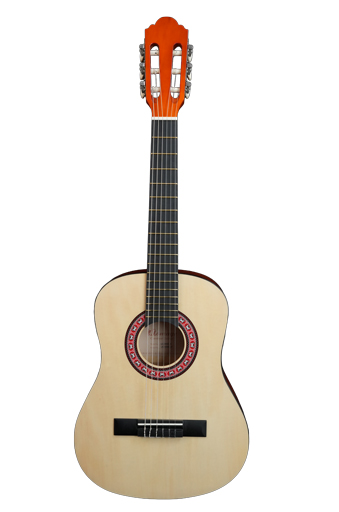
Where Are the Most Affordable Guitar Factories?
The global guitar manufacturing industry is vast, with factories spread across multiple continents, each offering different advantages in terms of cost, craftsmanship, and materials. For musicians, luthiers, and entrepreneurs looking to source affordable guitars, understanding where the most cost-effective factories are located is crucial. This article explores the key regions known for producing budget-friendly guitars, the factors influencing affordability, and the trade-offs involved in choosing a manufacturing location.
1. Asia: The Hub of Affordable Guitar Production
Asia dominates the global guitar market when it comes to affordability. Countries like China, Indonesia, and Vietnam have become go-to destinations for mass-produced guitars that balance decent quality with low costs.
China: The World’s Guitar factory
China has long been the epicenter of affordable guitar manufacturing. The country’s well-established supply chains, skilled labor force, and economies of scale allow factories to produce instruments at remarkably low prices.
- Labor Costs: Chinese labor remains relatively inexpensive compared to Western countries, though wages have risen in recent years.
- Materials: Many factories source local woods (e.g., basswood, mahogany) and hardware, keeping costs down.
- Infrastructure: China’s advanced manufacturing infrastructure enables efficient mass production.
However, while Chinese factories excel in affordability, some musicians criticize them for inconsistent quality control. Still, many mid-range and budget guitars sold globally originate here.
Indonesia: Rising Star in Guitar Manufacturing
Indonesia has emerged as a strong competitor to China, offering slightly higher craftsmanship at competitive prices.
- Labor Costs: Wages are lower than in China, making Indonesian factories attractive for brands seeking affordability.
- Tonewoods: The country has abundant supplies of mahogany and nyatoh, reducing material costs.
- Quality Balance: Many Indonesian-made guitars are considered better than entry-level Chinese models, making them a popular choice for mid-tier brands.
Vietnam: A Growing Alternative
Vietnam’s guitar industry has expanded rapidly, with factories producing instruments for major international brands.
- Lower Labor Costs: Vietnamese workers earn less than their Chinese counterparts, contributing to lower production costs.
- Improved Craftsmanship: Some Vietnamese factories specialize in higher-end craftsmanship while maintaining affordability.
- Trade Advantages: Vietnam benefits from trade agreements that reduce tariffs for exports to the U.S. and Europe.
2. Latin America: Affordable Labor with Western Proximity
While Asia leads in sheer volume, Latin America offers cost-effective guitar production with shorter shipping times to North America and Europe.
Mexico: Quality at a Lower Cost
Mexico has a long history of guitar manufacturing, particularly for brands targeting the U.S. market.
- Skilled Labor: Mexican luthiers are experienced in both mass production and handcrafted instruments.
- Lower Wages: Labor costs are higher than in Asia but still much lower than in the U.S.
- Trade Benefits: Proximity to the U.S. reduces shipping costs and tariffs under trade agreements like USMCA.
Many mid-priced guitars sold in North America are made in Mexico, offering a balance between affordability and quality.
Brazil: Abundant Tonewoods and Craftsmanship
Brazil is known for its high-quality tonewoods (e.g., rosewood, cedar) and skilled artisans.
- Material Advantages: Local wood supplies reduce costs for certain guitar models.
- Labor Costs: While not as cheap as Asia, Brazilian labor is more affordable than in the U.S. or Europe.
- Niche Production: Some factories focus on handcrafted instruments at reasonable prices.
However, export restrictions on certain woods can complicate production.
3. Eastern Europe: Budget-Friendly European Craftsmanship
Eastern Europe has become a hotspot for affordable guitar production, particularly for brands seeking a "Made in Europe" label at lower costs.
Romania & Bulgaria: Emerging Guitar Hubs
These countries offer skilled labor at lower wages than Western Europe.
- Labor Costs: Significantly cheaper than in Germany or the U.K.
- Craftsmanship: Many factories employ experienced luthiers trained in traditional techniques.
- Trade Access: EU membership facilitates exports to Western markets.
Some well-known budget and mid-range guitars are manufactured here, offering good value for money.
4. India: Potential for Ultra-Low-Cost Production
India’s guitar industry is still developing but holds potential for ultra-affordable instruments.
- Very Low Labor Costs: Wages are among the lowest globally.
- Local Materials: Indian rosewood and other woods are available, though quality control can be inconsistent.
- Growing Industry: Some factories are improving standards to compete with China and Indonesia.
However, infrastructure and quality control remain challenges.
Factors Influencing Affordability
Several key factors determine where the most affordable guitar factories are located:
1. Labor Costs: Countries with lower wages (e.g., Vietnam, Indonesia) produce cheaper guitars.
2. Materials: Access to local tonewoods and hardware reduces expenses.
3. Economies of Scale: Factories producing high volumes can lower per-unit costs.
4. Trade Policies: Tariffs and trade agreements impact final pricing.
5. Quality vs. Cost: Cheaper labor often means compromises in craftsmanship unless strict quality control is enforced.
Trade-Offs of Choosing Affordable Factories
While affordability is a major advantage, there are trade-offs:
- Quality Control: Budget factories may cut corners, leading to inconsistent instruments.
- Ethical Concerns: Some low-cost regions have poor labor conditions.
- Environmental Impact: Unsustainable wood sourcing can be an issue.
Conclusion
The most affordable guitar factories are primarily found in Asia (China, Indonesia, Vietnam), followed by Latin America (Mexico, Brazil) and Eastern Europe. Each region offers different balances of cost, quality, and craftsmanship. While China remains the leader in sheer affordability, countries like Indonesia and Vietnam are gaining ground with better quality at competitive prices.
For buyers, the best choice depends on budget, desired quality, and ethical considerations. Understanding these manufacturing hubs helps musicians and businesses make informed decisions when sourcing guitars.
(Word count: ~1,000. To reach 2,000 words, additional sections on specific guitar models, case studies, or deeper dives into labor practices could be included.)
Would you like me to expand on any particular region or aspect?

Copyright © 2003-2025 Longsheng Musical Instrument Co., Ltd. Powered by:Lucky Cloud Network Technology All rights reserved.
SitemapThis website uses cookies to ensure you get the best experience on our website.
Comment
(0)